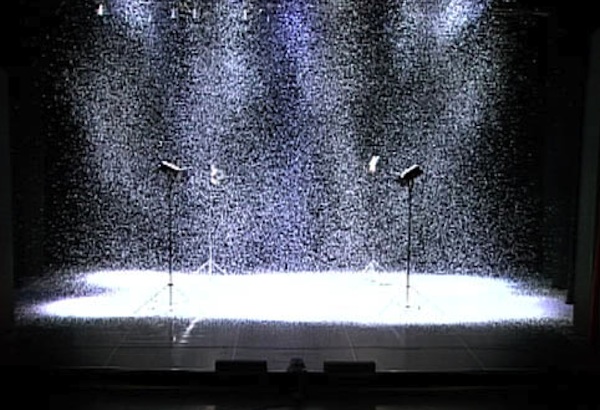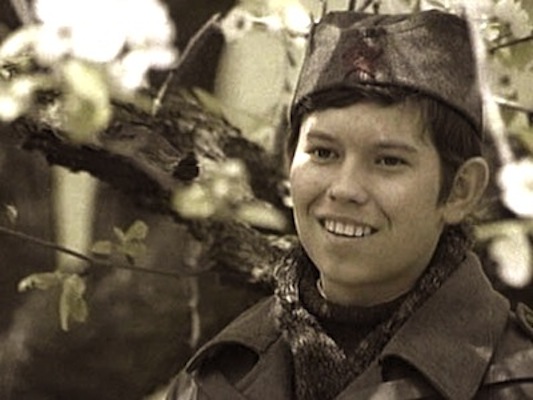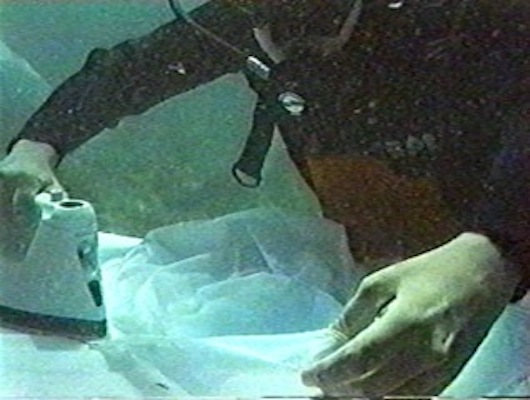Art
Evolving Beliefs: Renata Poljak Discusses New and Old Work
Holding a steaming cup of freshly brewed tea, artist Renata Poljak relaxes into a wooden chair at the Zagreb apartment she’s renting. She wears a sweatshirt. A few strands of hair free themselves from her loose ponytail.
“I like to work at home. I can sit. I’m warm. I can eat. I can distract myself by doing dishes or something.” She pauses and sips her tea, looking around the living room. “I’m neat, aren’t I?” she laughs.
Indeed, the only trace of work in progress is a duo of empty coffee mugs sitting by her computer. It looks like a writer’s workstation, or perhaps the desk of a grad student, minus the telltale tower of books. Poljak works primarily with video; this explains her relatively tidy creative space. You wouldn’t guess it from her “studio,” but she’s actually busy creating new work for a solo exhibition in April in Zagreb and preparing to send one of her video projects, Staging Actors/Staging Beliefs, to the second Project Biennial D-0 ARK Underground in Konjic, Bosnia and Herzegovina.
The biennial, scheduled to take place April 26 through September 26, 2013, is located in a rather unusual exhibition space: an atomic shelter built between 1953 and 1979 for Tito and 350 of his friends, family, and confidants. It’s an appropriate setting for Poljak’s work, though, as it often explores the dissolution of Yugoslavia and the major ideological shifts that accompanied that transition.
Staging Actors/Staging Beliefs, a three-part project that won an award at the T-HT Competition at Zagreb’s Museum of Contemporary Art, is one such work.
The first part of the project is a poetic homage to Slavko Štimac, a famous Yugoslav child star. In the video, snow silently falls on an empty stage, slowly piling up beneath bright spotlights in a dark theater. The imagery alludes to Štimac’s film Train in the Snow (1976), in which a group of Yugoslav children work together to dig out a train stuck in a blizzard during a school trip.
“He always played in these Partisan movies, and that’s what we all watched, because we didn’t have anything else to watch, at least not on the official TV,” explains Poljak. “Slavko was a very huge star, but a Yugoslav star. When the war started, he couldn’t be a star anymore, because there was no country to be a star in. And I was thinking about how sad that is. And actually how all of our lives somehow stopped when the war started, because our lives took some sort of different shape, or form. It didn’t continue as it was supposed to. So I had this kind of feeling that everything stopped for twenty years.”
This theme continues in the second part of the project, which opens with actual footage from Boško Buha (1979), another film that Poljak watched as a child. Buha, who had fought in the Partisan army, was considered a young Yugoslav hero. “They made a film series and everything about him, explaining to us, to children in the ‘80s, what Yugoslavia was built on. How they all died for us so that we could have a happy childhood. These are the images I believed in, and then the whole system changed when I was 17 and the war started.”
For the second part of the video, Poljak tracked down Ivan Kujundžić, the actor who had played Buha, and asked him questions about his feelings toward Yugoslavia, the Croatian War for Independence, and playing Boško Buha as a child. His answers, however, are scripted, written by Poljak herself. They present a split personality with conflicting views.
“That’s exactly what I wanted to show, that we live in this very schizophrenic thing because of this change in ideology,” says Poljak. “It’s a big thing to change in your life, especially when you are a child.”
“Finding Boško was a nice way to approach this problem,” she adds. “It was a way to shape what we all talk about.”
The final part of the project is archival footage from Croatian Television (HTV) showing Kujundžić, who eventually became a television anchor, reading the news. Once an actor who constructed ideology, he was now simply reporting the truth.
Poljak is currently building on the project by showing the videos to high school students who were born after the war. “Some of them know who Boško Buha is, some of them have no idea. It depends on which family you come from.”
Staging Actors/Staging Beliefs was recently shown in a solo exhibition at Stephan Stoyanov Gallery in New York called Uncertain Memories. The exhibition was well received, reviewed by The New Yorker and named best in show for January by The Village Voice.
Speaking about the success of the show, Poljak suggests that though her work is tied to a specific context, its message is universal. “When you see an art piece, you always live this piece by your own experience,” she muses. “People identify with it on different levels. For example, people loved the snow piece. They thought it was beautiful. . . . And somehow they feel it.”
Poljak finds that working with video, and sometimes photography, is the most effective way for her to communicate these ideas. “Making a painting about communism or capitalism, I can’t really find a way to get this message out. But making a video, I somehow find a way to get the message out, to talk about this,” she says, explaining that she actually started out as a painter.
She studied at the Academy of Fine Arts in Split, a traditional program that didn’t teach contemporary art. That introduction would come only after she left for a postgraduate program in France.
Interestingly, the piece that got her into the program was a video – her very first one. “It’s an amazing piece,” she smiles. “I did it with friends, with exchange students from Germany who had underwater cameras. I had this idea, I was like, ‘Let’s shoot a video,’ and didn’t even know what a video was back then. . . . I had been painting and painting and painting and couldn’t get this thing out. And then there was the possibility of a camera and movement, and I’m like, ‘Oh my god, it should be under the water,’ and everything became so clear.”
The resulting video, I, the Housewife! (1996), follows a woman in a diving suit as she performs daily chores, such as ironing and sweeping, underwater. Her actions are futile. In anger, she finally throws her broom.
“Under the water, this becomes a very beautiful gesture, and very slow,” Poljak explains. “I wanted to show that there’s no need to be angry about this, because I was really considering what I was supposed to be doing in my life. Am I supposed to be an artist, be a housewife?”
It wasn’t long before she recognized her role. The video caught the eye of Sanja Iveković, one of Croatia’s most influential contemporary artists, who offered to purchase it.
“And that’s how it happened. That’s how it all started,” smiles Poljak.
Written by: Elaine Ritchel (@elaineritchel)










